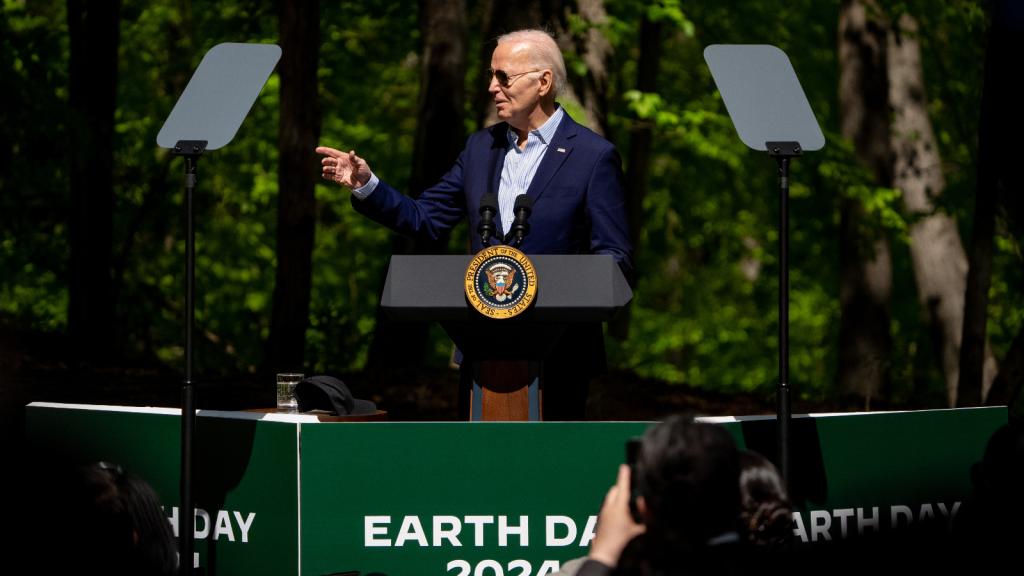The Obama administration released its 2011 budget proposal today and the internets are choked with stories about it. The four biggest green stories are EPA funding, fossil-fuel defunding, nuke and clean energy spending, and the cap-and-trade placeholder.
EPA regs are funded
The EPA’s budget (PDF), which jumped up by 34 percent least year, will decline slightly from $10.3 to $10.2 billion. More notably, it contains $21 million to implement the Mandatory Greenhouse Gas Reporting Rule and $43 million to implement regulations on greenhouse gas emissions:
Requested funds include $25 million to aid States in permitting activities for greenhouse gas (GHG) emissions under the New Source Review, and Title V operating permits programs. The Budget also requests $7 million to develop New Source Performance Standards to control GHG emissions from a few categories of major stationary sources. The Budget requests an increase of $6 million to support regulatory programs to reduce GHG emissions from mobile sources. These initiatives will help the United States meet its target for emissions reductions.
The message to Congress — particularly Dirty Air Act sponsors Murkowski et al. — is that the administration still intends to regulate greenhouse gases if Congress doesn’t legislate.
Fossil fuels lose out
The proposed budget “plans to do away with $36.5 billion in tax breaks to the oil and natural gas industry and $2.3 billion for the coal sector between 2011-2020.” Note that fossil fuels get $70.2 billion in subsidies between 2002 and 2008 — and that excludes implicit subsidies like unpriced carbon and military spending — so this is the tip of the iceberg. Of course, modest efforts to remove fossil-fuel subsidies are inevitably portrayed by fossil shills as “raising taxes,” and such efforts have failed in Congress many times before, so this one gets filed under, uh, aspirational.
Nuke and clean energy funding
To the naked eye it looks like nuclear energy wins out here:
The Budget substantially expands support for construction of new nuclear power plants by increasing the Department of Energy loan guarantees authority for such projects by $36 billion, to a total of $54.5 billion, and provides credit subsidy funding of $500 million to support $3 to $5 billion of loan guarantees for energy efficiency and renewable energy projects.
But it’s worth unpacking this. As OMB chief Peter Orszag emphasized in a briefing call this morning, the nuclear loan guarantees are meant to be fully repaid, while the renewable energy and energy efficiency money contains $500 million in credit subsidy. So there’s more direct spending on clean energy.
That’s with one big caveat, of course: that the nuclear industry doesn’t default on loans, sticking taxpayers with the liability. That could never happen, right? Ha ha. See Sue Sturgis and Dan Weiss on that subject. Or see the Congressional Research Service (PDF), which says the “federal government would bear most of the risk, facing potentially large losses if borrowers defaulted on reactor projects that could not be salvaged.” Or the Congressional Budget Office, which “considers the risk of default on such a loan guarantee to be very high–well above 50 percent.”
Cap-and-trade placeholder
The FY2010 budget contained projected revenue from a cap-and-trade system — $79 billion a year by 2012, $83 billion by 2019. Obviously that revenue, um, never showed up. (Thanks, Senate!)
This year, as Kate Sheppard noted, the administration included no specific revenue projections. Instead it merely includes a placeholder, noting it will “work to enact and implement a comprehensive market-based policy that will reduce greenhouse gas emissions in the range of 17 percent in 2020 and more than 80 percent by 2050.” Since nobody, including the administration, knows what a final bill might look like or how much revenue might be generated or how much of that revenue might go into the Treasury, they decided to just punt.
Whether this means they have less confidence in a bill being passed is a matter of (mostly pointless, but fun) speculation.
Other stuff
The budget increases the (already turbocharged) budget for scientific research (PDF) by 5.6 percent to $61.6 billion, so that’s cool. Also:
- It boosts the Department of Energy budget to $28.4 billion, up $2 billion from 2010. Its renewable energy and efficiency budget is up $113 million to $2.4 billion.
- The Labor Department sets aside “$85 million for green job training, providing support for about 14,000 participants.”
- The Department of Transportation sets aside “$530 million as part of the President’s Partnership for Sustainable Communities to help State and local governments invest in sustainable transportation infrastructure that integrates with housing development and other critical investments.”
- The Department of Interior sets aside “$73 million — a $14 million increase — to build agency capacity to review and permit renewable energy projects on federal lands. DOI has set a goal to permit at least 9,000 megawatts of new solar, wind, and geothermal electricity generation capacity on DOI-managed lands by the end of 2011.”
What it all means
Generically, the budget reflects an administration that cares about science and wants to solve the energy crisis. But we already knew that. On the specifics there’s a degree of la-la land here, since spending is ultimately up to Congress and Congress is broken. So we’ll just have to wait and see what happens.



